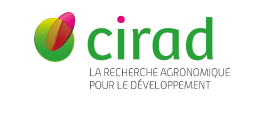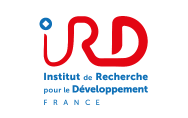Non-point sources of nitrogen pollution in the agricultural context are mainly due to the overfertilization of agricultural fields for crop yield improvement. Regardless of the considerable efforts made at various levels to optimize the cultural management practices, the nitrogen surplus in the soil may constitute a high potential for nitrate leaching towards freshwater resources, especially at the beginning of the winter season. Indeed, the lack of catch crops during this period, the high soil mineralization levels (often left bare in summer and fall seasons), and the uncontrolled nitrogen management practices increase the soil nitrogen pool, leading to extreme nitrate exportations following the first winter precipitations.
This thesis work aims to develop a new nitrate index based on conceptual modeling of nitrate transfer through agricultural subsurface drained soils.
First, the conceptual NIT-DRAIN model was developed, optimized, and validated to simulate nitrate leaching through agricultural subsurface drained catchments. Then, its spatiotemporal robustness was assessed based on observed nitrate concentrations data at different time steps (hour, days), collected at three agricultural fields (La Jaillière, 1 ha; Chantemerle, 36 ha; Rampillon, 355 ha). One can note that only the seven input parameters and drainage discharge data are needed to estimate the remaining pool of nitrate at the beginning of the winter season (RNBW) as function of the measured nitrate concentrations at the subsurface drainage outlet.
Two adjoint sensitivity analyses (local and global) have been implemented to determine the influence of the model parameters on the nitrate concentrations (model output). Results indicate that nitrate transfer velocities (????) and the nitrogen-sharing factor (??) parameters show a significant impact on the model output.
The variational data assimilation method (4D-Var) has been implemented on the NIT-DRAIN model to enhance the RNBW estimations and the temporal evolution of the soil nitrogen pool. In addition, an ensemble of sampling frequency of nitrate concentration observations has been considered (e.g., hour, day, month, quarter) to assess their impact on the RNBW estimations. Thus, it has been shown that RNBW estimation errors become substantial starting from a monthly sampling of nitrate concentrations data.
Finally, the performance of the drainage simulation model (SIDRA-RU) has been evaluated in the prospect of a future coupling with the nitrate model (NIT-DRAIN). Hence, the adjoint code of the SIDRA-RU model has been generated using the automatic differentiation tool TAPENADE to facilitate the implementation of the variational data assimilation method. In the near future, we seek to avoid the need for the observed drainage discharge used as input of the NIT-DRAIN model by considering the simulated SIDRA-RU drainage data.
Keywords: variational data assimilation, 4D-Var, conceptual model, nitrate leaching, agricultural subsurface drainage, sensitivity analysis, optimization






